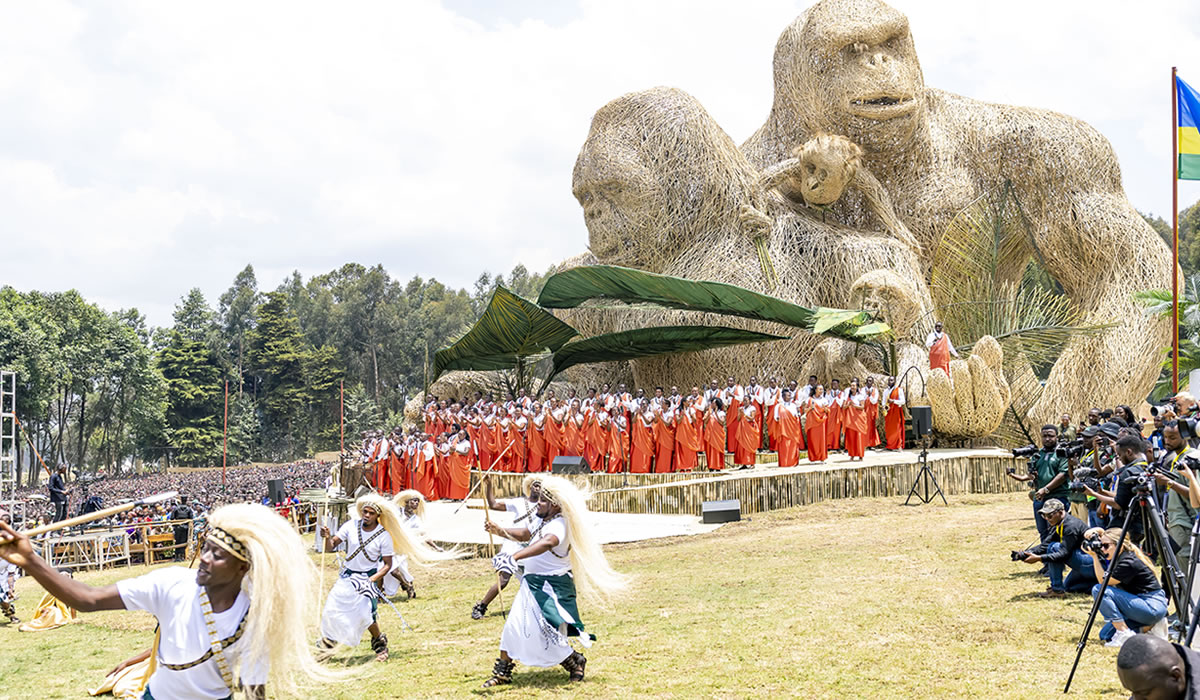Every year in the heart of Africa, a truly unique and inspiring celebration unfolds in…

The Best Time to Visit Rwanda for Gorilla Trekking
Rwanda is one of the most sought-after destinations for gorilla trekking. Nestled in East Africa, this beautiful country is home to the endangered mountain gorillas found in Volcanoes National Park. For wildlife enthusiasts and adventure seekers, encountering these magnificent primates in their natural habitat is a once-in-a-lifetime experience. However, choosing The Best Time to Visit Rwanda for Gorilla Trekking is crucial for an optimal trekking experience.
Gorilla trekking in Rwanda can be done all year round, but certain months provide better conditions than others. The best times to visit are generally during the dry seasons, which occur twice a year: the long dry season from June to September and the short dry season from December to February. These periods offer the most favorable trekking conditions due to reduced rainfall, making it easier to navigate the dense forests of Volcanoes National Park.
The months of June, July, August, and September are widely regarded as the best time for gorilla trekking in Rwanda. This is the peak tourist season, and for good reason. The trails are drier and less muddy, making the trek less strenuous. The weather is relatively stable, offering excellent visibility for photography and wildlife viewing. Daytime temperatures average around 20-27°C (68-80°F), making hiking more comfortable. Additionally, gorillas tend to stay at lower altitudes during the dry season, reducing the time required to locate them. Since this is the most popular time for gorilla trekking, it is advisable to book permits and accommodations well in advance. Permits cost $1,500 per person and tend to sell out quickly during peak season.
Another excellent time to visit Rwanda for gorilla trekking is during the short dry season from December to February. While slightly less busy than the long dry season, this period still offers great trekking conditions. Though occasional showers can occur, they are generally short-lived. The trails remain relatively dry, making the hike to locate gorillas more manageable. This period also coincides with the arrival of migratory birds, making it an excellent time for bird enthusiasts. If you prefer fewer crowds and good trekking conditions, this is an ideal time to plan your gorilla trek.
Although the dry seasons offer the best trekking conditions, some travelers prefer the off-peak rainy seasons, which include the long rainy season from March to May and the short rainy season from October to November. These months see heavier rainfall, making trekking more challenging due to muddy and slippery trails. However, there are some advantages to visiting during the rainy season. The forest is at its most vibrant, creating breathtaking scenery for photography. Since fewer people visit during this time, securing permits and accommodations is easier. Some lodges and tour operators offer discounts during the off-peak season. Due to abundant food sources, gorillas may not move as much, making them easier to find. However, trekking during these months requires a higher level of physical fitness, proper waterproof gear, and a willingness to endure muddy conditions.
Regardless of the season, gorilla trekking permits are limited to help conserve the gorilla habitat and ensure a sustainable tourism experience. Only 96 permits are issued per day, so booking at least 3-6 months in advance is highly recommended, especially during peak season. Luxury lodges, mid-range hotels, and budget accommodations are available near Volcanoes National Park. During peak seasons, high-end lodges fill up quickly, so early booking is essential.
Beyond gorilla trekking, Rwanda offers other incredible wildlife and cultural experiences. Golden monkey trekking is available in Volcanoes National Park, offering another fascinating primate experience. Nyungwe Forest National Park is home to chimpanzees and canopy walks. Akagera National Park offers a classic safari experience with lions, elephants, and other wildlife. The Kigali Genocide Memorial is a must-visit historical site in Rwanda’s capital city.
The best time to visit Rwanda for gorilla trekking is during the dry seasons from June to September and December to February. These months provide favorable weather, easier trekking conditions, and an overall better experience. However, for those willing to brave the rain, the wet seasons offer unique advantages, such as fewer crowds and lush, picturesque landscapes. No matter when you visit, gorilla trekking in Rwanda is an extraordinary adventure that leaves a lasting impression. Proper planning, including securing permits in advance and preparing for the terrain, ensures an unforgettable experience with these majestic creatures in their natural habitat.




